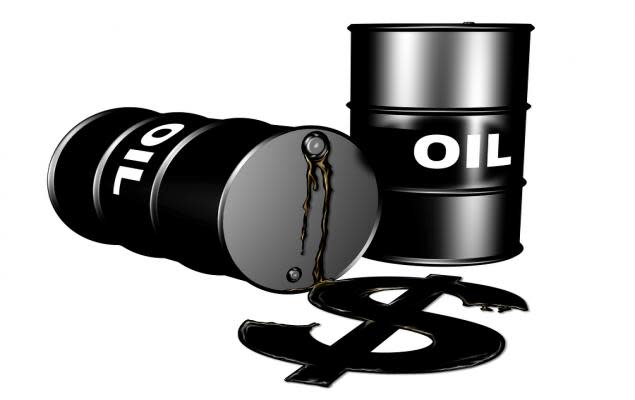4 Key Factors That Could Kill the Upside Momentum for Oil

Oil prices are finally on the mend, having rocketed more than 88% in May. On Tuesday, the commodity logged its highest settlement since early March. Oil futures fell to an all-time low in April and even went negative for a while, as the coronavirus pandemic destroyed demand amid ramped up production.
Crude’s phenomenal run was fueled by the OPEC+ production cuts, rising demand, a pullback in U.S. shale output and continuation of the Phase 1 trade deal with China. With prices at their highest level in three months, traders and investors are wondering whether the rally can be sustained.
Let's look at some factors that could lead to a near-term sell-off in oil.
The first is the tensions between the United States and China.
Investors are growing increasingly wary about the impact of renewed flare-ups between the United States and China over the latter’s plan to impose new security legislation on Hong Kong. The deteriorating relations between the world’s two largest energy consumers cast a pall over the nascent oil recovery. For the record, China is the world's largest crude importer and is second-biggest oil consumer behind the United States. While it was confirmed that President Trump would continue with the Phase 1 trade agreement with Beijing, a protracted dispute between the world’s two top economic superpowers could spook the oil market again.
The second reason is uncertainty surrounding Russia’s stance in extending the OPEC+ production cuts.
There has been conflicting information about whether Moscow will go ahead with the group’s oil supply management policy. Member countries of the OPEC+ group, looking to shore up prices, have started to withhold output by almost 10 million barrels per day – the largest in history – from May 1. Per the plan, the initial reduction would last for two months. Beginning July, the production cap would be relaxed to 8 million barrels per day through the remainder of this year. OPEC cartel’s biggest producer and exporter Saudi Arabia, who pledged an additional 1 million barrels per day in cuts over and above its agreed-upon quota, is not in favor of easing curbs until the end of 2020. However, Riyadh is yet to get confirmation from Russia on extending the record cuts beyond July. Last time, a feud between the two caused the historic collapse in crude prices.
The third is the potential increase in shale output.
Recent U.S. government data has been supportive in terms of U.S. producers scaling back operations. Weekly figures show output has dropped to 11.4 million barrels per day, since reaching 13.1 million in the second week of March. In particular, volumes from United States’ number one basin – Permian - is set to fall by 87,000 bbl/d month over month to 4.3 MMbbl/d in June – the second month of decline, as the likes of Diamondback Energy FANG, Cimarex Energy XEC, Concho Resources CXO, Pioneer Natural Resources PXD and others invest a lot less money into the unconventional play in 2020. However, crude’s rise from the bottom could encourage the shale patch to ramp up or resume drilling activities. In fact, the sharp gains in the price have already prompted EOG Resources EOG and Parsley Energy PE – carrying a Zacks Rank #3 (Hold) - to plan for potential revival of production. This will offset the output curbs elsewhere and weigh on the outlook for prices.
You can see the complete list of today’s Zacks #1 Rank (Strong Buy) stocks here.
And finally, the specter of unsupportive U.S. government data.
Last week, the federal government’s EIA report revealed that domestic supplies of crude posted a surprise climb. For the week ending May 22, oil inventories rose by 7.9 million barrels, versus expectations for a 1.2 million barrels decrease. A big jump in imports from Saudi Arabia accounted for the surprise stockpile increase with the world's biggest oil consumer. This put total domestic stocks at 534.4 million barrels – 12.2% above the year-ago figure and 13% over the five-year average. Another crude build would indicate that the historic supply cut pact is not enough for the market to rebalance, pushing prices back.
Conclusion
Oil prices have staged a remarkable comeback after falling into a deep abyss in April. But there is more than one instance over the past few years that the commodity’s run up have been short lived due to one or the other reason mentioned above. Therefore, investors must exercise caution while buying oil company shares amid crude's latest rally.
Zacks Top 10 Stocks for 2020
In addition to the stocks discussed above, would you like to know about our 10 finest buy-and-hold tickers for the entirety of 2020?
Last year's 2019 Zacks Top 10 Stocks portfolio returned gains as high as +102.7%. Now a brand-new portfolio has been handpicked from over 4,000 companies covered by the Zacks Rank. Don’t miss your chance to get in on these long-term buys.
Access Zacks Top 10 Stocks for 2020 today >>
Want the latest recommendations from Zacks Investment Research? Today, you can download 7 Best Stocks for the Next 30 Days. Click to get this free report
Pioneer Natural Resources Company (PXD) : Free Stock Analysis Report
EOG Resources, Inc. (EOG) : Free Stock Analysis Report
Concho Resources Inc. (CXO) : Free Stock Analysis Report
Cimarex Energy Co (XEC) : Free Stock Analysis Report
Diamondback Energy, Inc. (FANG) : Free Stock Analysis Report
Parsley Energy, Inc. (PE) : Free Stock Analysis Report
To read this article on Zacks.com click here.
Zacks Investment Research

 Yahoo News
Yahoo News 